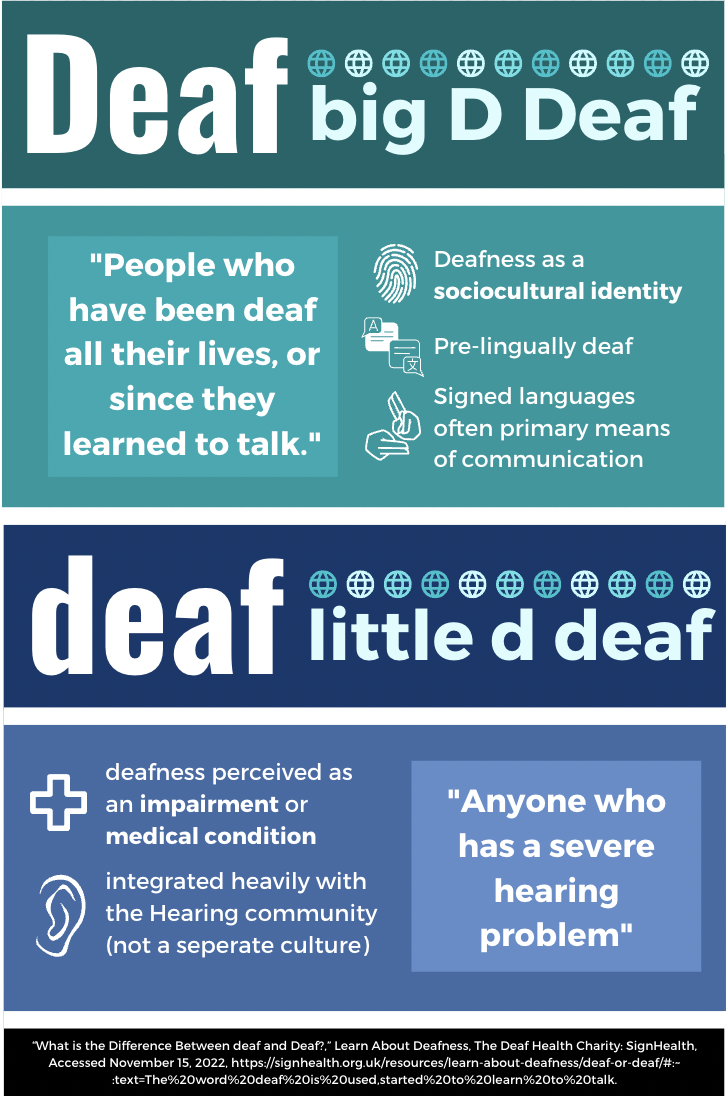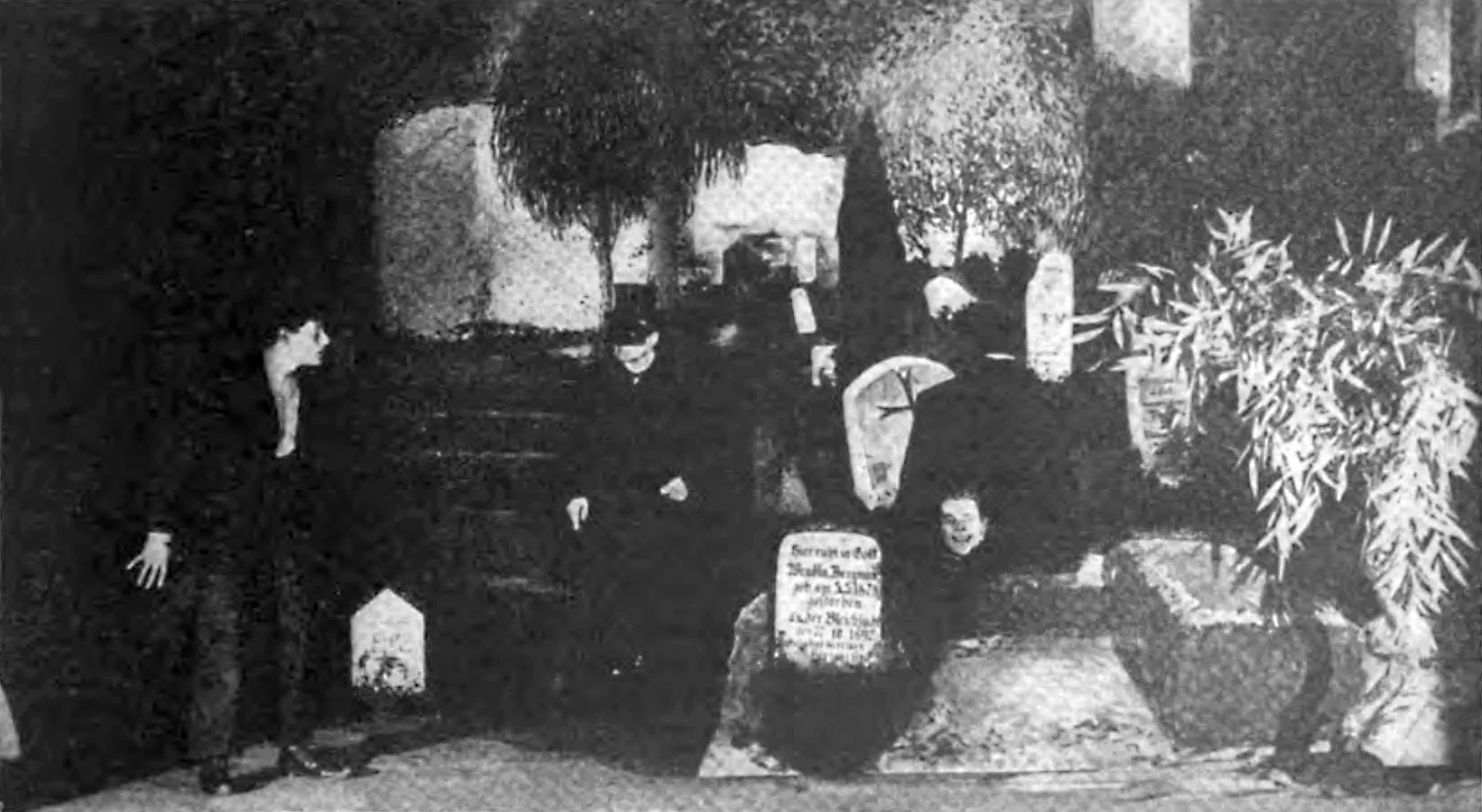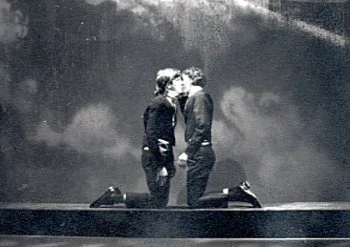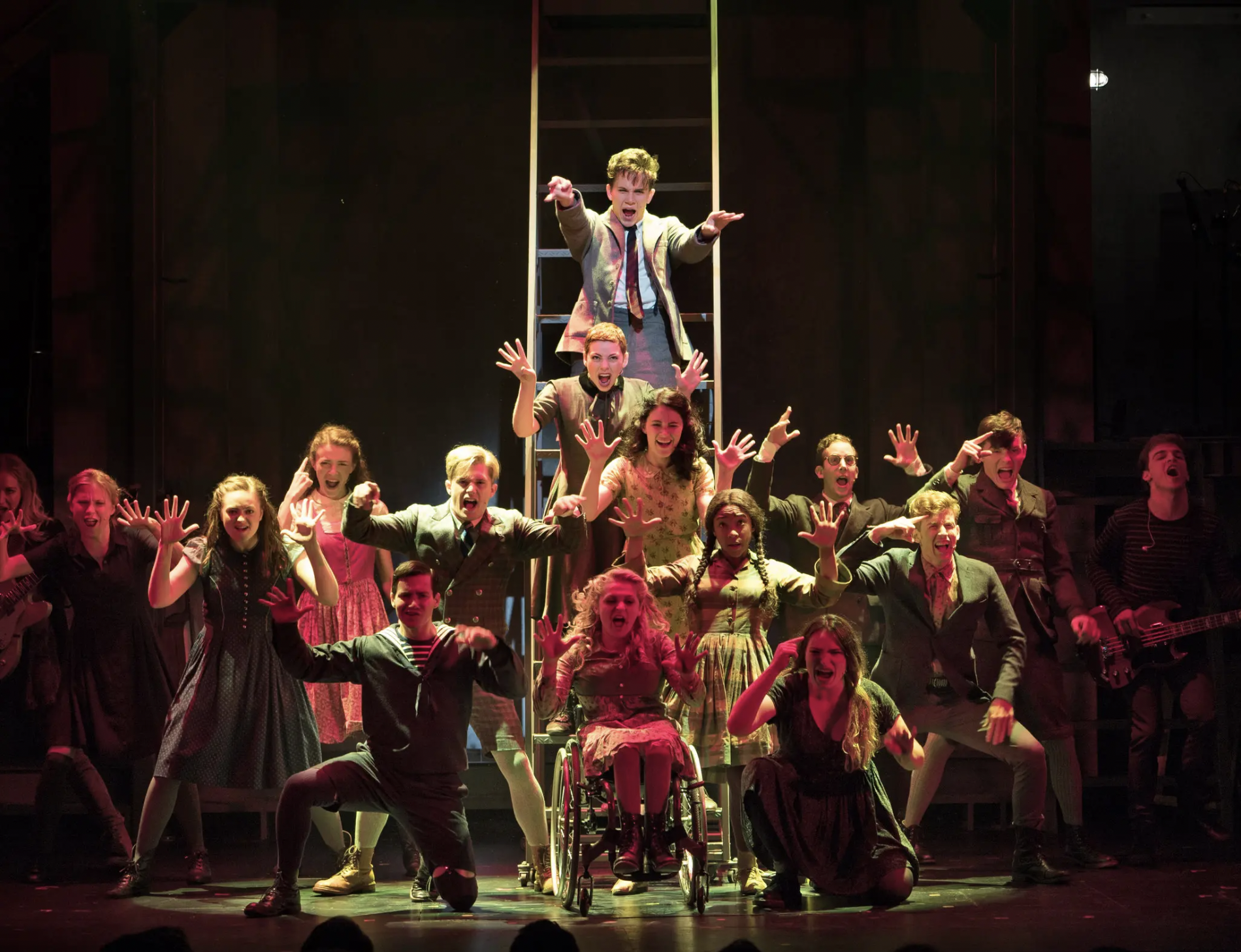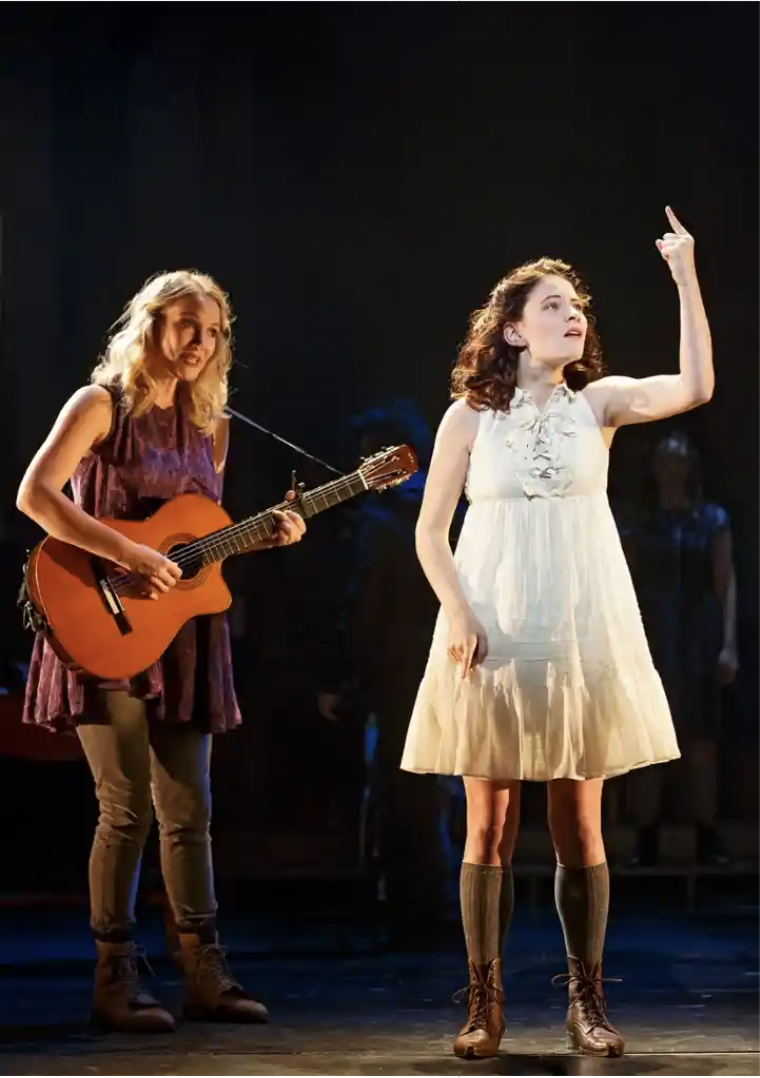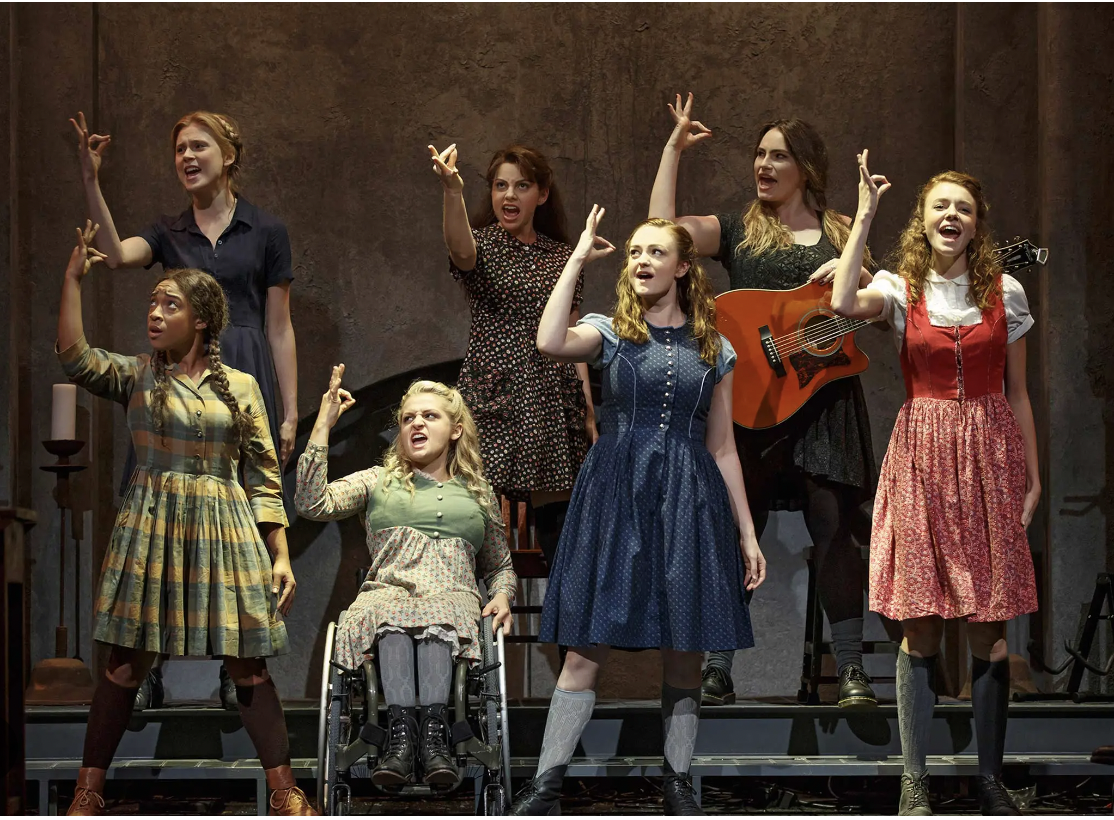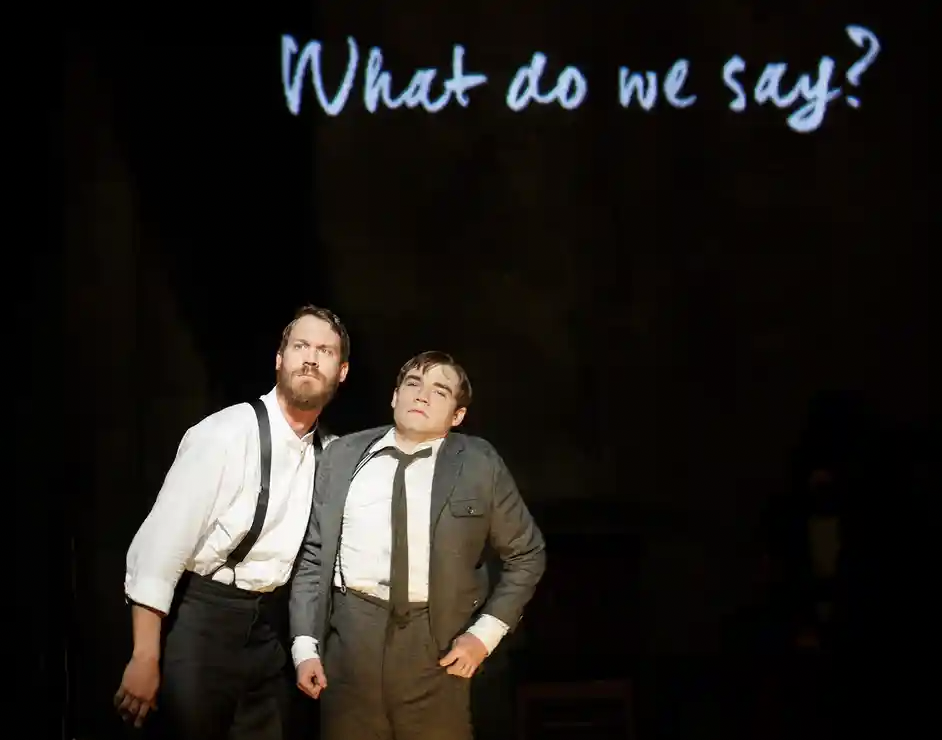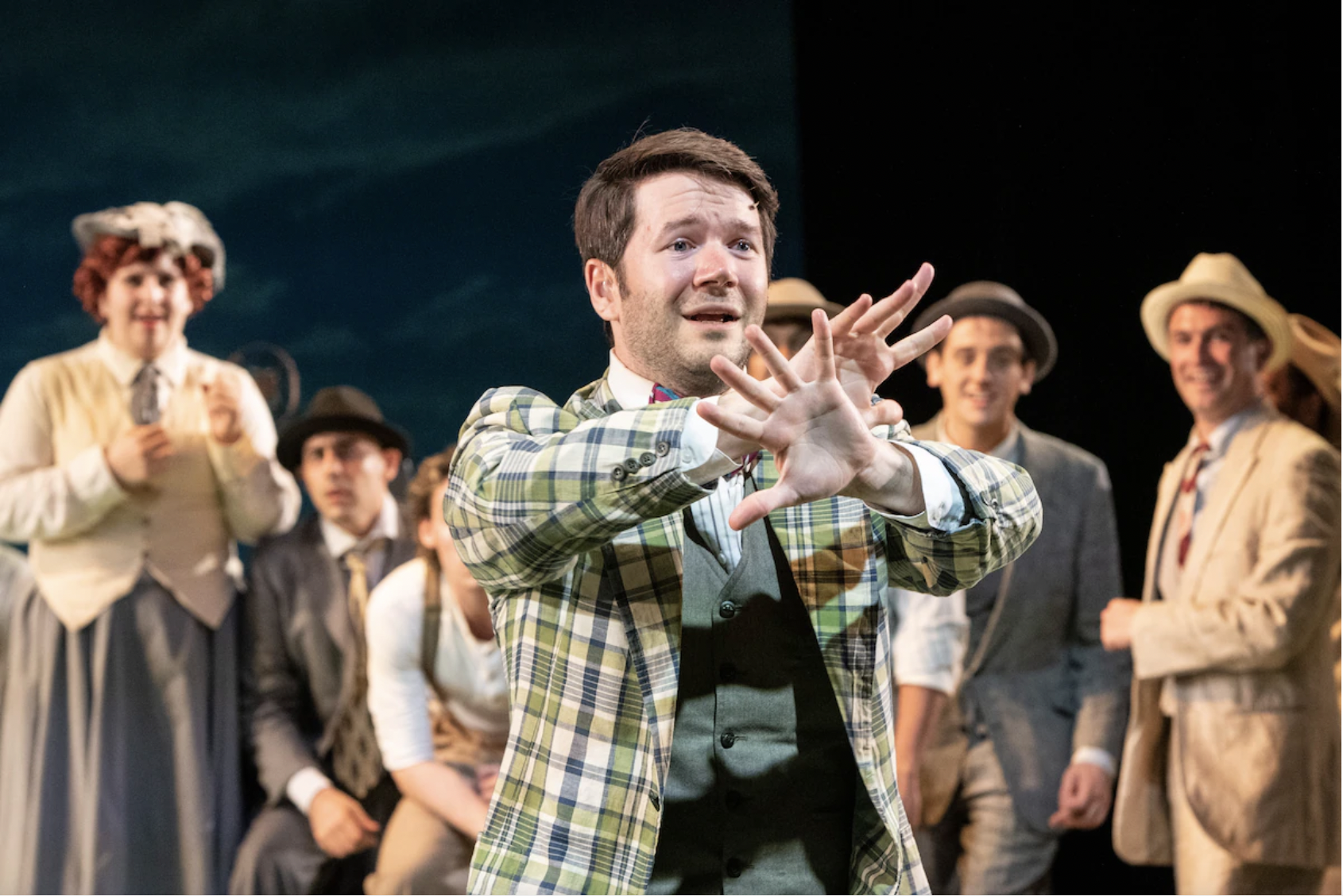CONTENT WARNING: Brief mention of death, abortion, rape, and suicide.
To read the author’s full research report on linguistic equity in the arts sector, click here.
INTRODUCTION:
In this article’s predecessor, it was argued that linguistic representation and language based accessibility are paramount to the development of a truly inclusive artistic sector that allows diverse individuals and communities to use the arts to strengthen their identities and in turn “understand how [they] matter.” However, the United States’ artistic sector presently fails to fully represent the substantial linguistic and cultural diversity of the nation. This does not mean, however, that there are no organizations the US can look to for best practices on how to integrate questions of linguistic identity and accessibility into artistic missions and programming. Often, these linguistic best practices are facilitated through the use of theatrical technologies.
As examined in this case study, Deaf West Theatre teaches through practice that (1) Language and linguistic identity can indeed advance and strengthen storytelling and (2) Audiences want to see linguistically diverse and accessible stories.
ASL USAGE AND DEAF CULTURE IN THE UNITED STATES:
According to the World Federation for the Deaf, there are over 70 million deaf individuals in the global population who use over 300 unique languages. In the United States alone, two percent of adults aged 45 to 54 have disabling hearing loss– a statistic that rises to 50 percent for those aged 75 and older. Further, roughly 3,750,000 members of the US population use ASL as their primary means of communication. The history of ASL began over 200 years ago at the American School for the Deaf, however, ASL is still highly underrepresented in US popular culture, accessibility services, and education. In particular, 98 percent of deaf individuals do not receive education in ASL and ASL-using adults disproportionally face significant job-based discrimination.
Further, ASL is importantly not simply a “signed version” of Spoken English, but rather its own unique language with a grammar and lexicon that differs significantly from Spoken English. “There is no universal sign language,” and to that end “ASL is a language completely separate and distinct from English” and other signed languages. In fact, “ASL has regional variations in the rhythms of signing, pronunciation, slang, and signs used.” It follows then, that many deaf Americans have a linguistic (and in turn, cultural) identity rooted not in Spoken English, but ASL: a unique, independently standardized language.
Figure 1: A breakdown of “big D Deaf” vs. “little d deaf.” (Figure made by Author)
Intertwined in this history and the significant diversity of hearing-related medical diagnoses, there is an additional important distinction between the labels “deaf” and “Deaf.” The term “deaf” (written with a lowercase “d”) refers to “anyone who has a severe hearing problem” while “Deaf” or “culturally Deaf” (written with an uppercase “D”) refers to “people who have been deaf all their lives, or since they learned to talk.” In other words, Deaf individuals and Deaf culture encompasses those who were “pre-lingually” deaf, and often use ASL as their first language. It has been established in this article’s predecessor that language shapes both identity and culture. As a result, the underrepresentation of deaf and Deaf cultures or identities hinders opportunities for equitable representation in the artistic sector.
DEAF WEST THEATRE & LINGUISTIC IDENTITY:
Founded in Los Angeles, California in 1991, Deaf West Theatre is a non-profit 501(c)(3) theatrical organization that positions themselves as “the artistic bridge between the Deaf and hearing worlds.” In their own words, the Company is committed to artistic “innovation, collaboration, training, and activism” in order to “engage artists and audiences in unparalleled theatre and media experiences” that weave “American Sign Language (ASL) with spoken English to create a seamless ballet of movement and voice.”
““Appearing on stage and signing in front of a paying audience is the personal affirmation of the deaf identity over pathology.””
Linguistic equity and the value of Deaf cultural representation in the arts is at the core of Deaf West’s mission. Company Artistic Director David Kurs states: “Deaf actors realize, perhaps subconsciously, that appearing on stage is the repudiation of the advice to their hearing parents when their child was born– that the child was deficient and needed to be fixed.” To Deaf West, “appearing on stage and signing in front of a paying audience is the personal affirmation of the deaf identity over pathology.” However, Deaf West Theatre does not stop at the casting of majority deaf, hard-of-hearing, and disabled actors. Rather, the organization strives to tear down “barriers of culture and language” in order to craft a “higher truth” in storytelling. Through their intertwined aims to reconstruct theatre through a deeply linguistic and cultural lens for Deaf and hearing audiences alike and “increase the stature of deaf actors nationwide,” Deaf West Theatre works to illuminate the hidden margin of Deaf artists and stories in popular artistic entertainment. As just one of their many linguistically and culturally groundbreaking productions, Deaf West Theatre’s 2015 Broadway revival of Spring Awakening stands as an example of best practice for how artistic organizations can place linguistic equity and accessibility at the forefront of their works.
A BRIEF HISTORY OF SPRING AWAKENING:
Written in the early 1890s, German Playwright Frank Wedekind’s Frühlings Erwachen: Eline Kindertragodie (popularly translated to: Spring Awakening: A Childrens’ Tragedy) has a tumultuous history marked by extensive controversy and attempts for censorship. Propelling such controversy, at its core Spring Awakening is a critical exposé of the sexual repression and oppressive education systems imposed on German youth. The narrative follows the turmoil of developing sexuality in teenagers Melchior Gabor, Wendla Bergmann, and Moritz Stiefel in a society pushing to keep them secluded in ignorance.
Image 1: Photograph of Spring Awakening’s final scene dated to the 1906 staging of Wedekind’s provocative play, directed by Max Reinhardt. (Wikimedia Commons)
Image 2: Photograph from the four-performance 1974 run of Spring Awakening at the Hampton Court Theatre in the United Kingdom. The play was reported banned in the country until 1963. (Youth Action Theatre)
Spring Awakening was first performed at Berlin’s Deutsches Theatre in 1906, and–featuring topics such as sex, abuse, rape, homosexuality, abortion, masturbation, and sadism–was consistently met with public outrage. Further, the text’s central clash pitted adult incompetence against youthful curiosity through the use of comedic or absurd dialogue– framing a tragic topic which had previously been taboo with distinctive comedic style and youthful energy that offended many early audiences. As one researcher Joel Garza explains: “what [was] truly disturbing about the production [was] not the subject matter of the plot, but the fierce truth with which Wedekind present[ed] it.” In fact, the first ever English-language production staged in New York City closed in 1917 after one performance on charges of obscenity. However, despite this lack of critical success, the power of Wedekind’s narrative has made it incessantly relevant and malleable across vast historical contexts and the persistent, cross-cultural stigma placed around youthful curiosity, sexuality, and tragedy. Such adaptability was best exemplified in Steven Sater and Duncan Sheik’s 2006 rock-musical of the same title, subsequently revived by Deaf West Theatre and director Michael Arden in 2015.
DEAF WEST THEATRE’S SPRING AWAKENING RECONSTRUCTION:
Deaf West Theatre’s 2015 Broadway-transfer revival of Sater and Sheik’s rock musical found the perfect niche for Wedekind’s story in a contemporary, linguistically diverse context through its seamless integration of ASL in storytelling. Aligned with the Deaf West Theatre standard, the production was delivered entirely in ASL alongside Spoken English and featured a cast in which roughly half of the young actors were Deaf or hard-of-hearing and making their Broadway debuts. However, what facilitated linguistic equity and accessibility in the production to an even greater degree was the choice to make several of the story’s central characters Deaf. Each Deaf character was played by two actors: one Deaf or hard-of-hearing and one using ASL as well as Spoken English. Within the production, dressed in more contemporary costumes and often doubling as members of the orchestra, Deaf actors’ hearing counterparts acted as the inner voices and emotions of their characters. Not only did this choice offer opportunities for the expression of marginalized voices to both hearing and Deaf audiences on a massive Broadway scale, but it significantly enhanced the strength of Wedekind’s original text.
Video 1: Deaf West Theatre’s performance of “Mama Who Bore Me” and “The Bitch of Living” at the 70th annual Tony Awards. (BroadwayInHD)
Importantly, no major changes needed to be made to Spring Awakening’s script to establish these Deaf characters and simultaneously increase linguistic representation and accessibility for members of the Deaf community. In addition to playing directly into Sater and Sheik’s musical emphasis on the young teenagers’ internal frustration and the external repression, Deaf West’s Spring Awakening played directly to the historical contexts and contemporary struggles that thematically shape the musical’s text.
Image 3: The company of Deaf West’s Spring Awakening. (The New York Times)
Speaking first to these historical contexts, in 1880–just ten years before Wedekind’s completion of Spring Awakening–the “Second International Congress on Education of the Deaf … deemed oral education superior to sign language and passed a resolution banning sign language in school.” In all variations of Spring Awakening, the rebellious and academically struggling Moritz is kicked out of school and written off by the story’s adults as a failure. In Deaf West Theatre’s Spring Awakening, Mortiz was portrayed as canonically Deaf. Mortiz label as a “failure” in the eyes of his generational superiors takes on a whole new level of meaning when applied to the fact that “the term given to deaf students who were unable to succeed with the often-abusive oral method [in late nineteenth century education] was ‘failure.’”
Image 4: Actresses Katie Boeck and Sandra Mae Frank as Wendla in Deaf West’s Spring Awakening (The Guardian)
From a more contemporary viewpoint, as discussed above, the underservice of educational and cultural opportunities for members of the Deaf community in the United States remain prominent. Core to Spring Awakening’s message is the pitfalls of botched communication and misunderstanding between older and younger generations, and today “about 90 percent of deaf people are born to hearing parents.” To drive forth this message of the weight of intergenerational communication, in Deaf West’s Spring Awakening, young teenager Wendla is portrayed as canonically deaf. As said by ASL Master Shoshannah Stern: “making Wendla deaf gave her a concrete sort of repression that could be seen and felt… [and] with that added layer, she becomes someone whose mother can barely communicate with her.” Where this lack of communication ultimately leads to Wendla’s death by botched abortion following rape from her peer and no knowledge of reproduction, Deaf West’s choice to make several of Spring Awakening’s central characters canonically deaf captured and presented a terrifying situation of great reality facing members of the Deaf community over the past several centuries.
Deaf West Theatre’s 2015 Broadway production of Spring Awakening used their commitment to propagating linguistic diversity and accessibility for Deaf communities in order to to create artistic pathways for deaf, hard-of-hearing, and disabled creatives. Alongside these strides for linguistic diversity and accessibility, however, they effectively strengthened and reconstructed the text of a tragic, incessantly relevant story. As Director Michael Arden explains, the integration of a linguistically and culturally marginalized community into Wedekind’s “comment” on youth was able to give “that comment more of a specific time and place” and in turn center the reality of “what is going on in [these marginalized communities’] lives.”
THE USE OF TECHNOLOGY IN DEAF WEST THEATRE’S SPRING AWAKENING:
Video 2: Show clips from the 2015 Broadway revival of Spring Awakening by Deaf West Theatre that feature integrated English translations through scenically integrated technology. (BroadwayBox.com)
Key to storytelling in Deaf West’s Spring Awakening was the usage of technology. As is standard for Deaf West Theatre, the production was aimed at both deaf and hearing audiences. Within the structure of performance, however, Director Michael Arden wished to incorporate moments where no Spoken English was used. However, these instances still necessitated being understood by hearing audiences. To solve this potential gap in audience understanding, a series of LED screens were built into various set pieces to project English “translations” for hearing audiences. When spoken English stopped, hearing and deaf audiences alike were left in silence. However, for hearing audiences these moments offered a reconstruction of expectation for art in the United States market to be presented in Spoken English; speakers of the hegemonic language of English theatre were forced to rely on the accessibility technology typically offered exclusively for non-Spoken-English users as their only means to comprehend key moments of the production’s story.
Image 5: Russell Harvard as Adult Men and Daniel Durant as Mortiz in Deaf' West’s Spring Awakening. (The Guardian)
In perhaps the most powerful usage of this structure, after being deemed a failure and removed from school, Moritz Stiefel commits suicide onstage. In the moments before his death, the character’s hearing counterpart leaves his side; his inner, guiding voice walks away from him, and Mortiz’ Deaf actor is left alone with himself and his pain. The character’s final monologue is performed fully in ASL, with the Spoken English translation projected overhead. In one of the text’s most tragic moments, the use of ASL and technology-facilitated translation almost paradoxically created a piercing unity between linguistically diverse audiences. For Deaf West Theatre, translated technology built into the set was the key to their clear establishment not only of the stark differences between ASL and Spoken English cultures, but also of language and communication as the root of tragedy in Wedekind’s story.
WHAT DEAF WEST’S SPRING AWAKENING MEANS FOR THE ARTS SECTOR:
The critical and popular success of Deaf West Theatre’s 2015 Broadway revival of Spring Awakening offers two major lessons to a United States artistic sector that necessitates increased conversations on linguistic equity and accessibility in order to truly represent the nation’s diverse populations and cultures.
(1) Language and linguistic identity can advance and strengthen artistic storytelling.
Deaf West Theatre recognizes the cultural diversity and massive misrepresentation of the community it serves. However, alongside efforts to create artistic opportunities for deaf, hard-of-hearing, and otherwise disabled creatives, they make efforts to use language as a means to advance storytelling. The introduction of ASL and canonically deaf characters in Spring Awakening (without having to alter any text) added a tragic dimension of reality for marginalized communities to Wedekind’s original story.
Conversations about and integration of linguistic diversity in artistic programming should not exist simply to fill a “diversity box.” Rather, questions of how linguistic equity and accessibility can be propagated should revolve around how increased equitable practices may be used to advance an organization’s programming. Deaf West Theatre is a model of best practice for how an understanding of linguistic identity can be used to enrich storytelling that all members of the United States arts sector should strive to emulate.
Image 6: Deaf actor James Caverly in Olney Theatre Center’s production of The Music Man. (The Washington Post)
Some American theatre companies have already begun to put this lesson from Deaf West Theatres to practice. After having seen Spring Awakening’s 2015 revival, Deaf actor James Caverly approached Maryland’s Olney Theatre Center about addressing the lack of roles for deaf actors in the D.C. metropolitan area. After being featured in a Deaf role in Hulu’s Only Murders in the Building, Caverly returned to Olney to star as Harold Hill in the company’s 2022 production The Music Man. Where Olney soared, however, was following in Deaf West’s example and adapting the story of The Music Man’s River City to have a history rooted in Deaf culture, and using Spoken English supertitles to facilitate moments of exclusive ASL usage. As Caverly said of the process: “when you add deaf people into the mix, it breathes new life into a classic musical.”
These lessons do not stop, of course, at ASL. As established, 1 in 5 Americans speak a language other than English; the nation is incredibly linguistically diverse. Deaf West Theatre’s (and now, Olney Theatre Center’s) integration of ASL is just one example of how a single underrepresented language and culture can be used to propel both storytelling and linguistic inaccessibility through the use of technology, but the message is applicable to all of the nation’s incredibly diverse languages and cultures.
(2) Audiences want to see linguistically diverse and accessible stories.
In addition to the trailblazing lesson on best practices in linguistically equitable art, Deaf West Theatre’s production of Spring Awakening proved that audiences care about linguistically diverse stories that question the Spoken English artistic canon in the United States. Deaf West’s Spring Awakening premiered in a 99-seat venue in downtown Los Angeles before moving to an “upscale art theatre” in Beverly Hills and ultimately announcing its limited-engagement Broadway transfer. After ending their critically acclaimed Broadway engagement in January 2016, the revival was ultimately nominated for three Tony Awards. Lacking funds, however, Deaf West Theatre turned to crowdfunding to cover expenses for the full cast to travel and perform at Broadway’s Biggest Night. Ultimately, the company raised over $200,000 and the full cast performed a mashup of two numbers from the show–notably, with slightly altered ASL that was deemed “a little too hot for TV” by the Tony’s broadcasting network.
The journey of Deaf West’s Spring Awakening from a tiny Los Angeles theatre to the Tony Awards proved that audiences cared about the life the unique reconstruction breathed into Wedekind’s late nineteenth century story. What this means for other artistic organizations, then, is that where the arts offer moving, powerful pieces of art, audiences will follow–regardless of the language they are presented in.
The two remaining installments of this research into the current state of linguistic equity in the artistic sector will look to opera and film/television for more examples of best practice in how linguistic diversity and accessibility facilitated through technology can craft a truly inclusive artistic sector where art can be used help people “understand how they matter.”
-
“About.” Deaf West Theatre. Accessed November 15, 2022. https://www.deafwest.org/about.
Alvero, Erika Noel. “A Desperate Need to Connect.” UC Berkeley: Berkeley Graduate School of Journalism (2018). https://escholarship.org/uc/item/89g8r8m1.
“American Sign Language.” Health Information. National Institute on Deafness and Other Hearing Disorders. Accessed November 15, 2022. https://www.nidcd.nih.gov/health/american-sign-language#:~:text=American%20Sign%20Language%20(ASL)%20is,of%20the%20hands%20and%20face.
Buchwald, Linda. “A New Awakening: Deaf West’s Spring Awakening Puts the Musical’s Themes–Voiceless Youth, Generational Misunderstanding–Into Even Sharper Focus.” American Theatre 31, no. 9 (2014). https://www.americantheatre.org/2014/10/19/signs-of-the-times-spring-awakening-at-deaf-west/.
Epstein, Kayla and Alex Needham. “Spring Awakening on Broadway: Deaf Viewers Give Their Verdict.” The Guardian. October 29, 2015. https://www.theguardian.com/stage/2015/oct/29/spring-awakening-broadway-deaf-viewers-give-verdict.
Floyd, Thomas. “Olney Theatre Reimagines ‘The Music Man’ with Deaf Harold Hill.” Theatre & Dance. The Washington Post. June 29, 2022. https://www.washingtonpost.com/theater-dance/2022/06/29/.
Garza, Joel A. “My Purple Summer: A Comparative Analysis of Frank Wedekind’s Play ‘Spring Awakening’ and Steven Sater’s Adaptation ‘Spring Awakening: A New Musical’.” ProQuest. May 2013. 1-94. https://www.proquest.com/pagepdf/1412698695?accountid=9902.
Gelt, Jessica. “Deaf West Artistic Director David Kurs: Why Deaf Actors Should Be Cast to Play Deaf Characters.” Entertainment & Arts. Los Angeles Times. July 13, 2017. https://www.latimes.com/entertainment/arts/la-ca-cm-authenticity-deaf-west-20170713-story.html#:~:text=David%20Kurs%2C%20Deaf%20West%20Theatre's,production%20for%20the%20new%20season.&text=Deaf%20West%20Theatre%20was%20created,in%20service%20of%20vivid%20theater.
Gioia, Michael. “ASL for ‘Spring Awakening’ Tony Performance Was Censored by CBS.” Tony Awards. Playbill. June 12, 2016. https://playbill.com/article/asl-for-spring-awakening-tony-performance-was-censored-by-cbs.
Isherwood, Charles. “Review: ‘Spring Awakening’ by Deaf West Theatre Brings a New Sensation to Broadway.” The New York Times. September 27, 2015. https://www.nytimes.com/2015/09/28/theater/review-spring-awakening-by-deaf-west-theater-brings-a-new-sensation-to-broadway.html?_r=0.
Jay, Michelle. “History of American Sign Language.” Start ASL. Updated February 21, 2021. https://www.startasl.com/history-of-american-sign-language/.
Journey, Edward. “Frank Wedekind’s ‘Spring Awakening’ and the Tragedy of Adolescence.” Theatre Symposium 23, no. 1 (2015): 20-29. https://muse.jhu.edu/article/595043/pdf.
NEA Staff.“Why the Arts Matter.” National Endowment for the Arts. September 23, 2015. https://www.arts.gov/stories/blog/2015/why-arts-matter.
“Our Work.” World Federation for the Deaf. Accessed November 15, 2022. https://wfdeaf.org/our-work/.
“Photograph of the Finale of Max Reinhardt’s Production of ‘Spring Awakening.’” 1906. Photograph. Current Literature. March 1909. https://commons.wikimedia.org/wiki/File:Spring-Awakening-1906.jpg.
“Production Information.” Youth Action Theatre. Accessed December 14, 2022. https://www.yat.org.uk/productions/index.php?sid=31.
“Quick Statistics About Hearing.” National Institute on Deafness and Other Communication Disorders. Accessed November 15, 2022. https://www.nidcd.nih.gov/health/statistics/quick-statistics-hearing#:~:text=One%20in%20eight%20people%20in,based%20on%20standard%20hearing%20examinations.&text=About%202%20percent%20of%20adults,adults%20aged%2055%20to%2064.
70th Annual Tony Awards ‘Spring Awakening.’ YouTube Video. 4:51. Posted by “BroadwayInHD.”October 15, 2016. https://www.youtube.com/watch?v=CSagsMcak4Q.
Spring Awakening Deaf West Broadway Revival. YouTube Video. 1:22. Posted by “BroadwayBox.com.” September 24, 2015. https://www.youtube.com/watch?v=RsqbeH94jEU.
Viagas, Robert. “Radically Reconceived Broadway ‘Spring Awakening’ Revival Sets Dates; Here’s What it Will Look Like.” News. Playbill. July 7, 2015. https://playbill.com/article/radically-reconceived-broadway-spring-awakening-revival-sets-dates-heres-what-it-will-look-like-com-352762.
Waterfield, Sophia. “ASL Day 2019: Everything You Need to Know About American Sign Language.” U.S.. Newsweek. April 15, 2019.https://www.newsweek.com/asl-day-2019-american-sign-language-1394695#:~:text=72%25%20of%20families%20do%20not,1%20in%2010%20hearing%20women.
“What is the Difference Between deaf and Deaf?.” Learn About Deafness. The Deaf Health Charity: SignHealth. Accessed November 15, 2022. https://signhealth.org.uk/resources/learn-about-deafness/deaf-or-deaf/#:~:text=The%20word%20deaf%20is%20used,started%20to%20learn%20to%20talk.
Zeira, Ellysheva. “A Backstage Pass to Deaf West’s Production of ‘Spring Awakening.’” Blog Archive. Tenement Museum. Accessed December 5, 2022. https://www.tenement.org/blog/a-backstage-pass-to-deaf-wests-production-of-spring-awakening/.


